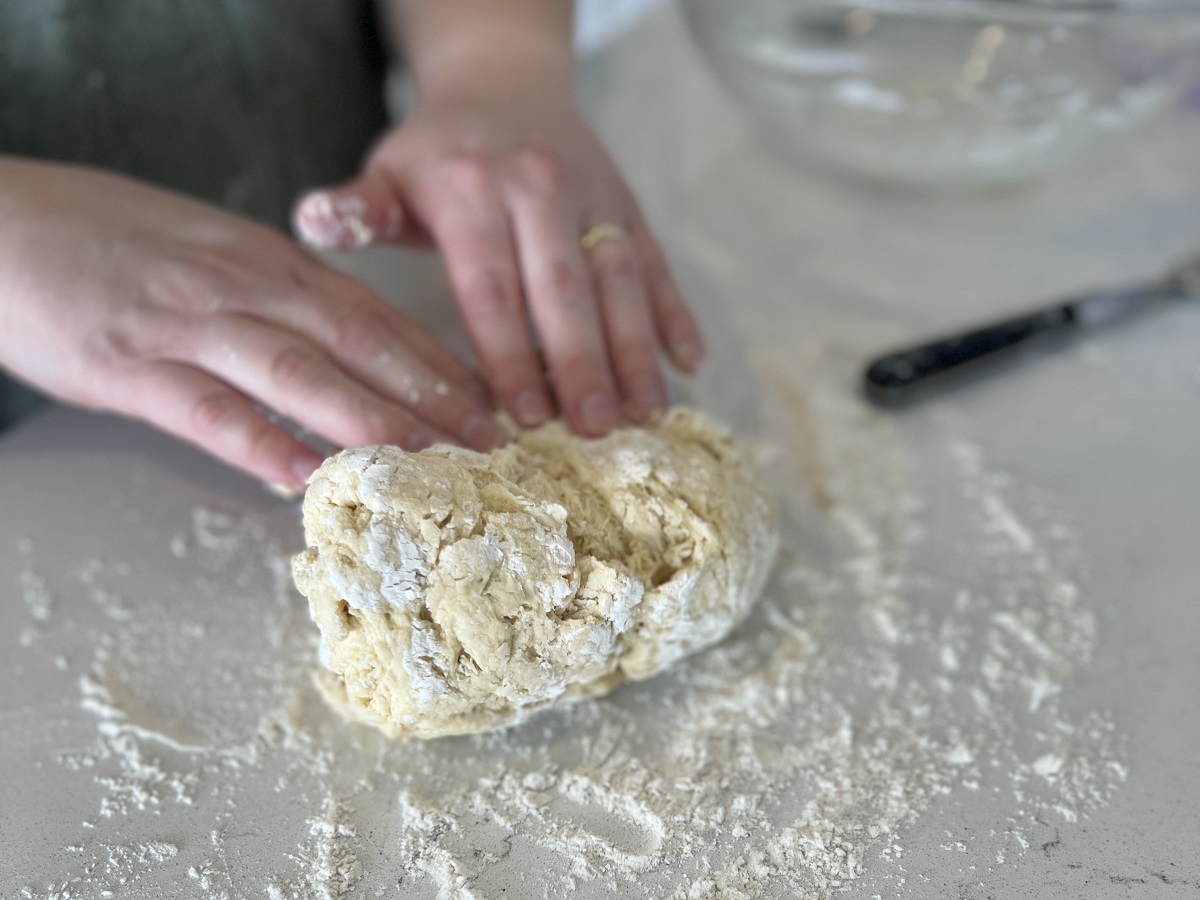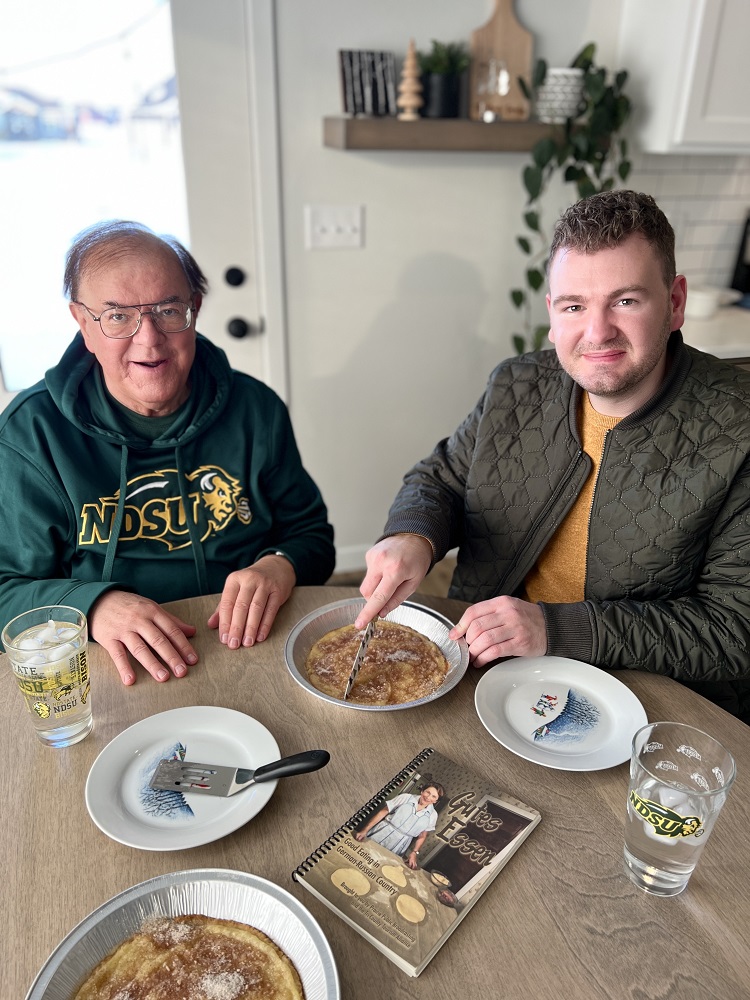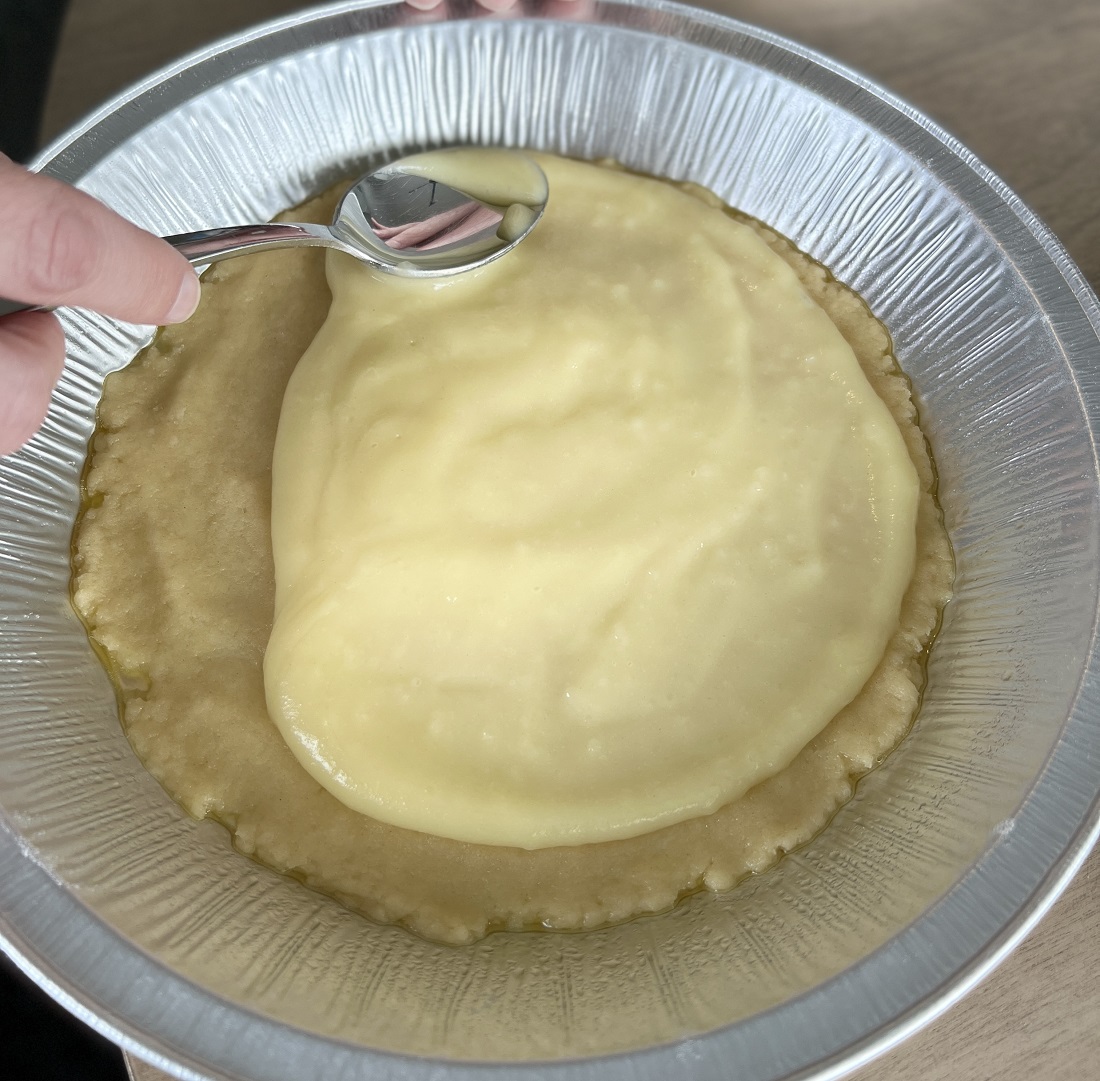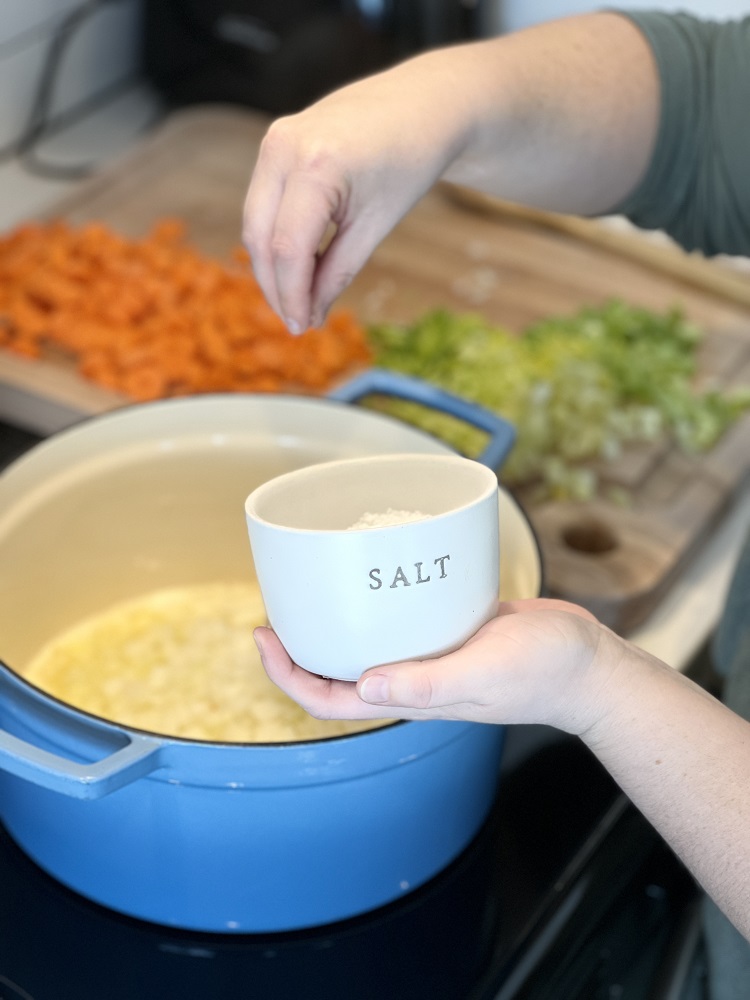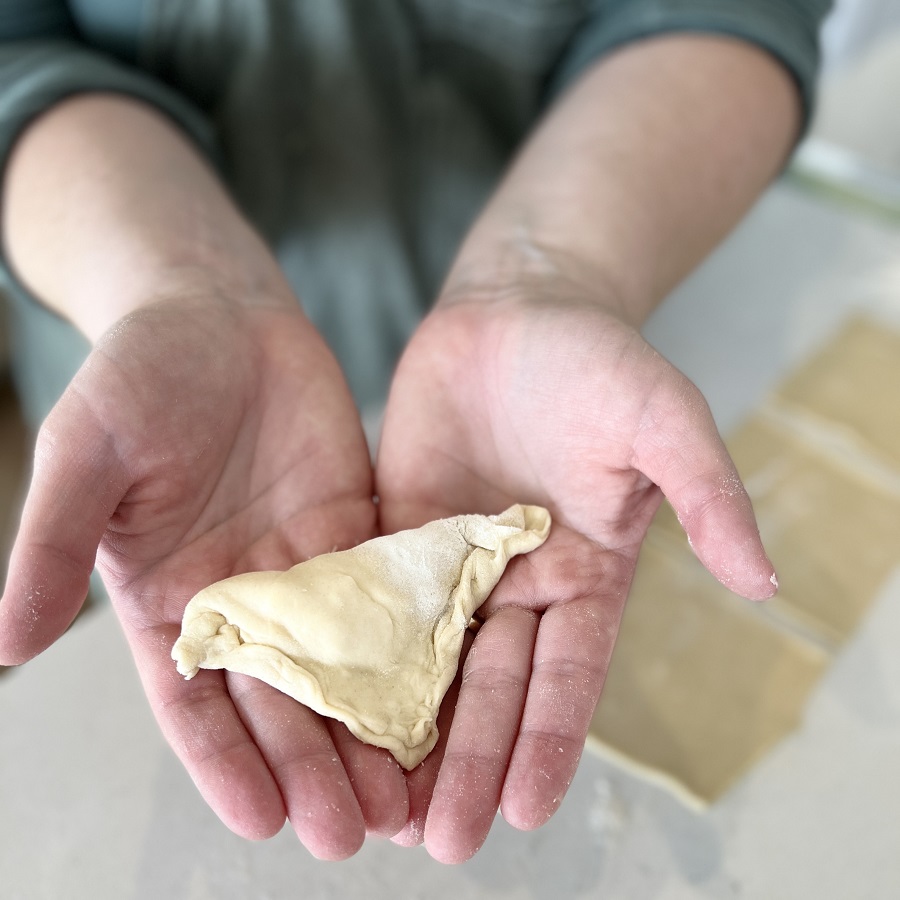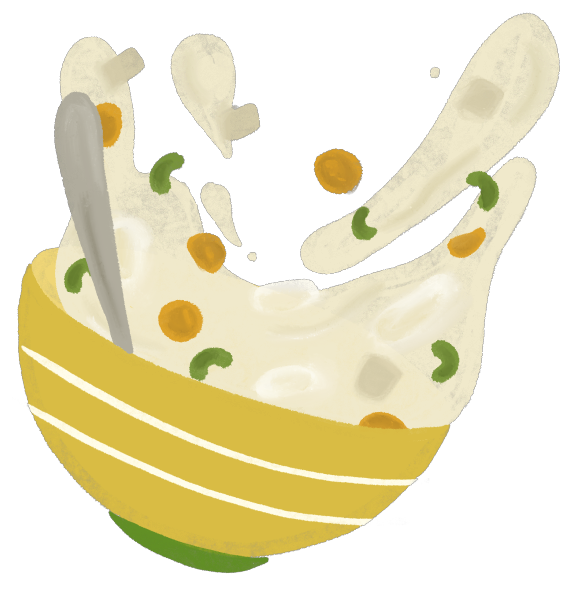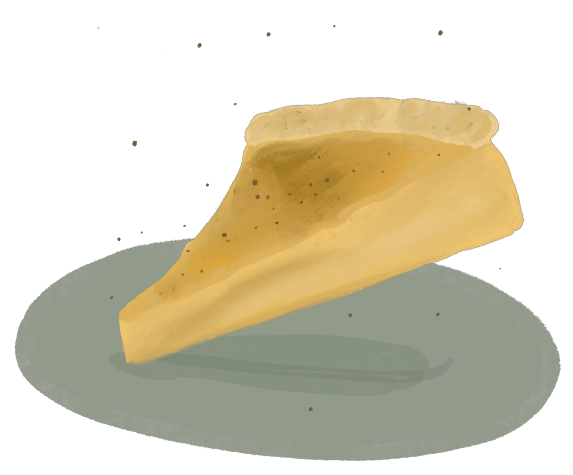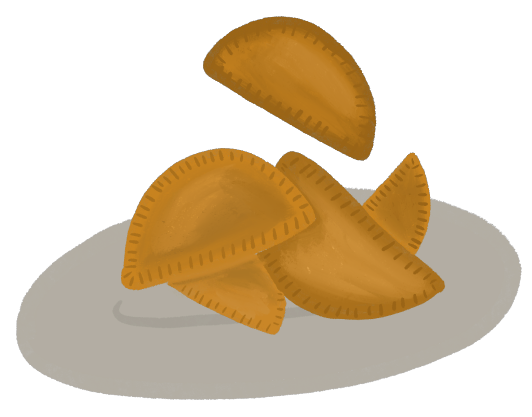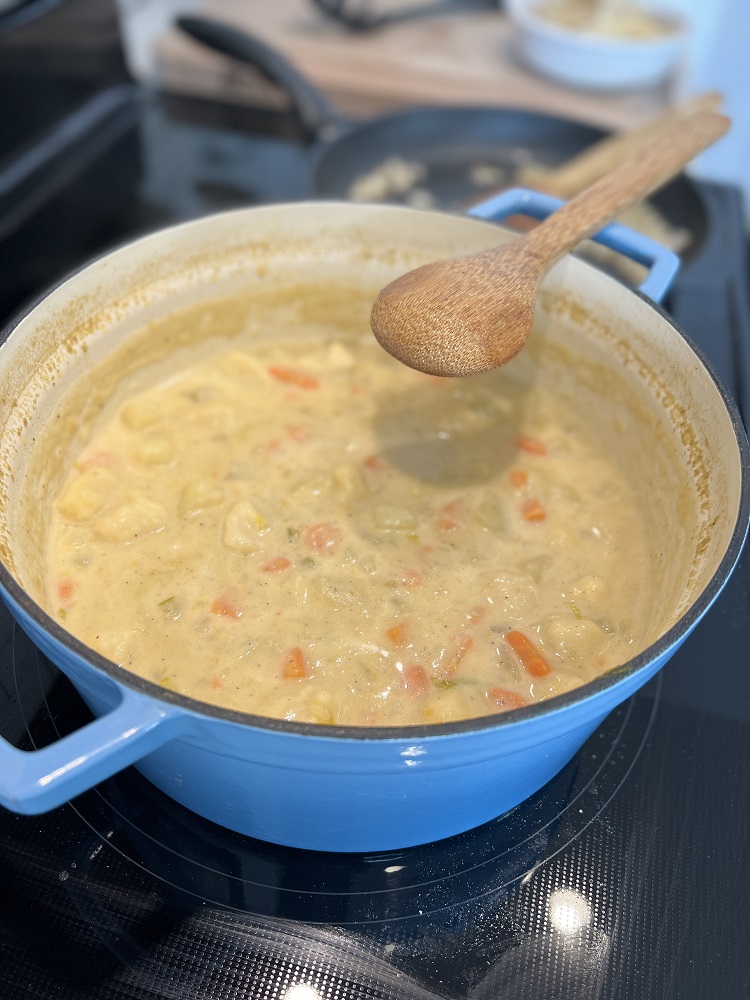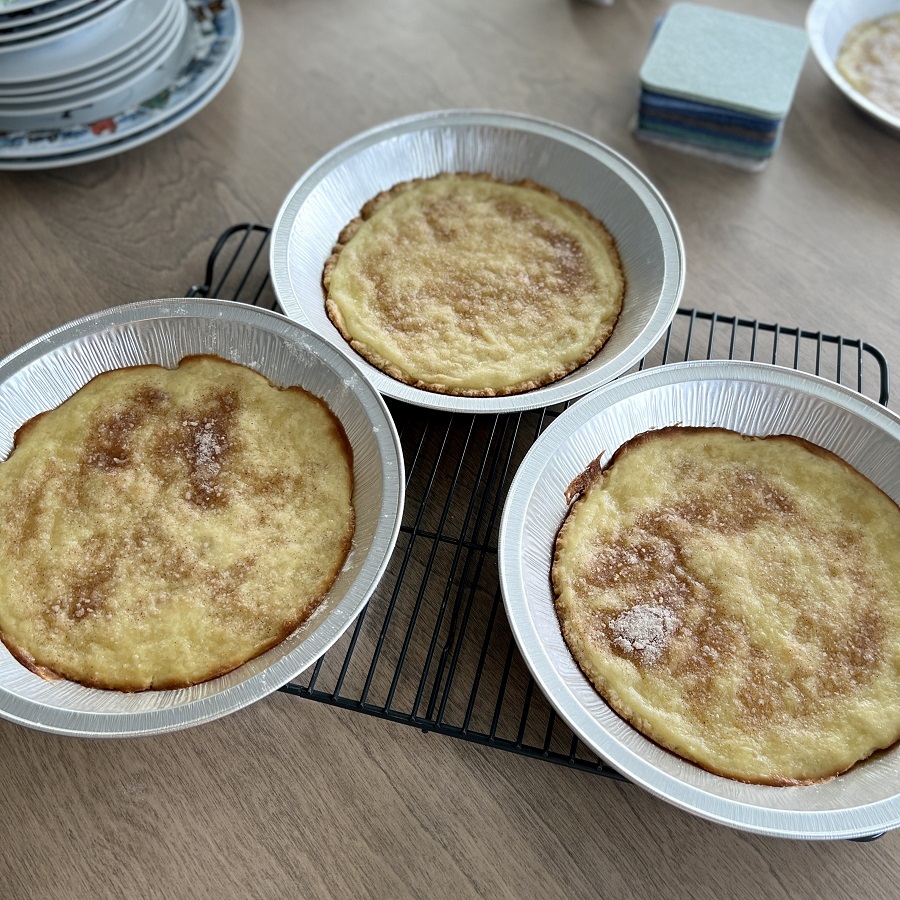Percussion performance major Alejandro López '25 is expanding the language of music at NDSU.
Read More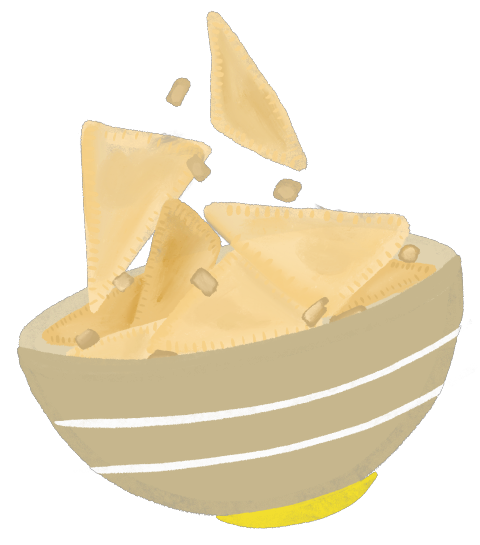
Cheese Buttons
Michael’s and Jeremy’s favorite German-Russian dish is the cheese button, or kase knoephla, which are thin pierogi-like dumplings stuffed with a dry curd or cottage cheese filling. Cheese buttons can be sweetened with cinnamon or made savory with salt and pepper.
Michael’s mother served them boiled or fried and topped with pieces of bread toasted in butter. Erika’s family serves them with diced onion and a mushroom soup gravy.
Erika, who has been making the recipe since she was 7 years old and standing in the kitchen at her grandmother’s side, said it takes her about four hours to make them on her own — with help from a couple of people in her family, it takes about two. As with most new recipes, Erika said “a little bit of magic has to happen.” She encourages people who are trying this recipe for the first time to “keep your eye on things and learn by doing.”
If there are leftovers, Erika suggests freezing them or frying them up for breakfast.
Recipe for Cheese Buttons/Three Corners/Kase Knoephla
Yields between 24-30 cheese buttons
Family recipe submitted by Erika (Graff) Green ’04
Dough ingredients:
- 4-5 cups flour
- 1 tsp salt
- 2 eggs
- 1 ½ cups lukewarm water
Cheese filling ingredients:
- 3 cups dry curd cottage cheese (or strain cottage cheese overnight in a colander)
- Dash of salt
- 1 egg
Optional topping ingredients:
- Small onion, diced and browned in oil or butter
- 1 can of condensed cream of mushroom soup and milk, as needed
- Sour cream, sweet cream, and salt and pepper
- Pieces of bread, toasted in butter
Directions:
- Mix all of the dough ingredients together — starting with 4 cups of flour, adding more as needed — and knead together on a pastry board until no longer sticky. Make sure the dough has some elasticity. If the consistency is too dry, it can become stiff and difficult to work with.
- Divide dough into two sections and form balls. Rest the dough for 15 minutes while covered with a towel.
- Mix together the ingredients for the cheese filling.
- Separate the dough into halves or thirds and roll out each section until it is about ¼ inch thick. Keep whatever dough you aren’t working with covered.
- Cut the dough into 4-inch squares, then add a teaspoon of filling to each square. Fold the squares into a triangle and pinch the edges tightly to prevent the filling from spilling out. As you assemble the cheese buttons, cover them up with a tea towel so the dough doesn’t dry out.
- Bring 4 cups or more water and a little oil to a raging boil. Add cheese buttons, but do not overcrowd the pot, and cook for about 5-7 minutes or until they float to the top and the dough is tender. Keep the water at a constant boil. The cheese buttons get very mushy if they’re in the water for too long.
- Saute onions in oil and/or make a mushroom gravy by adding milk to a can of condensed cream of mushroom soup until it has a thinner, gravy-like consistency. Reader Marilyn Laubhan Yanke suggests heating sour cream on the stove with just enough sweet cream to make a sauce, then seasoning it with salt and pepper. Serve and eat cheese buttons as soon as the temperature cools to taste.
- You may freeze uncooked cheese buttons if desired. To cook frozen, take out of the freezer, bring the water and oil to a raging boil, and add the cheese buttons in small batches to ensure the water doesn’t cool down.
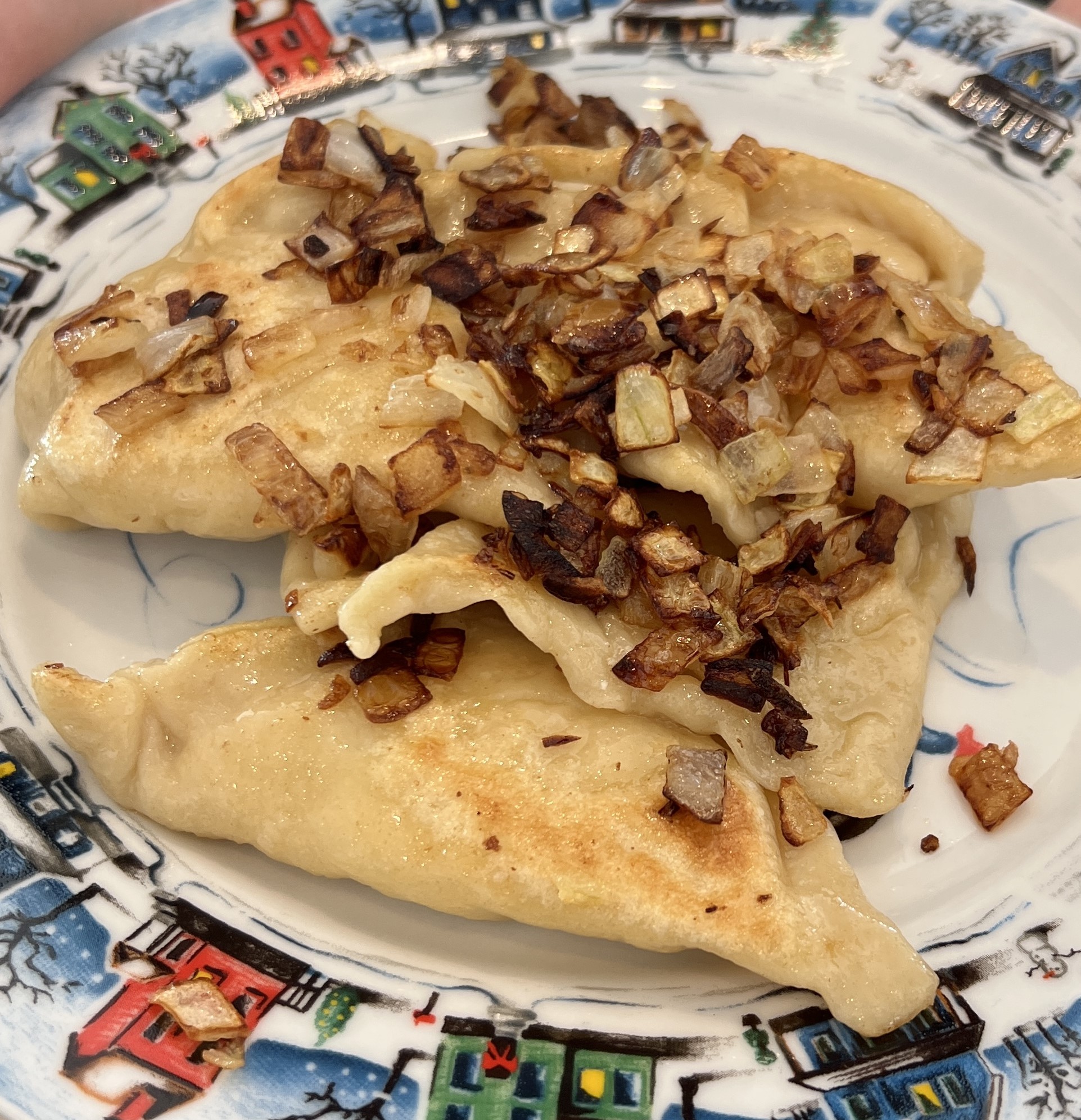
*Editor’s notes: Work with small amounts of dough when rolling — the scraps do not re-roll well. Keep enough flour under the dough while rolling to prevent it from sticking.
